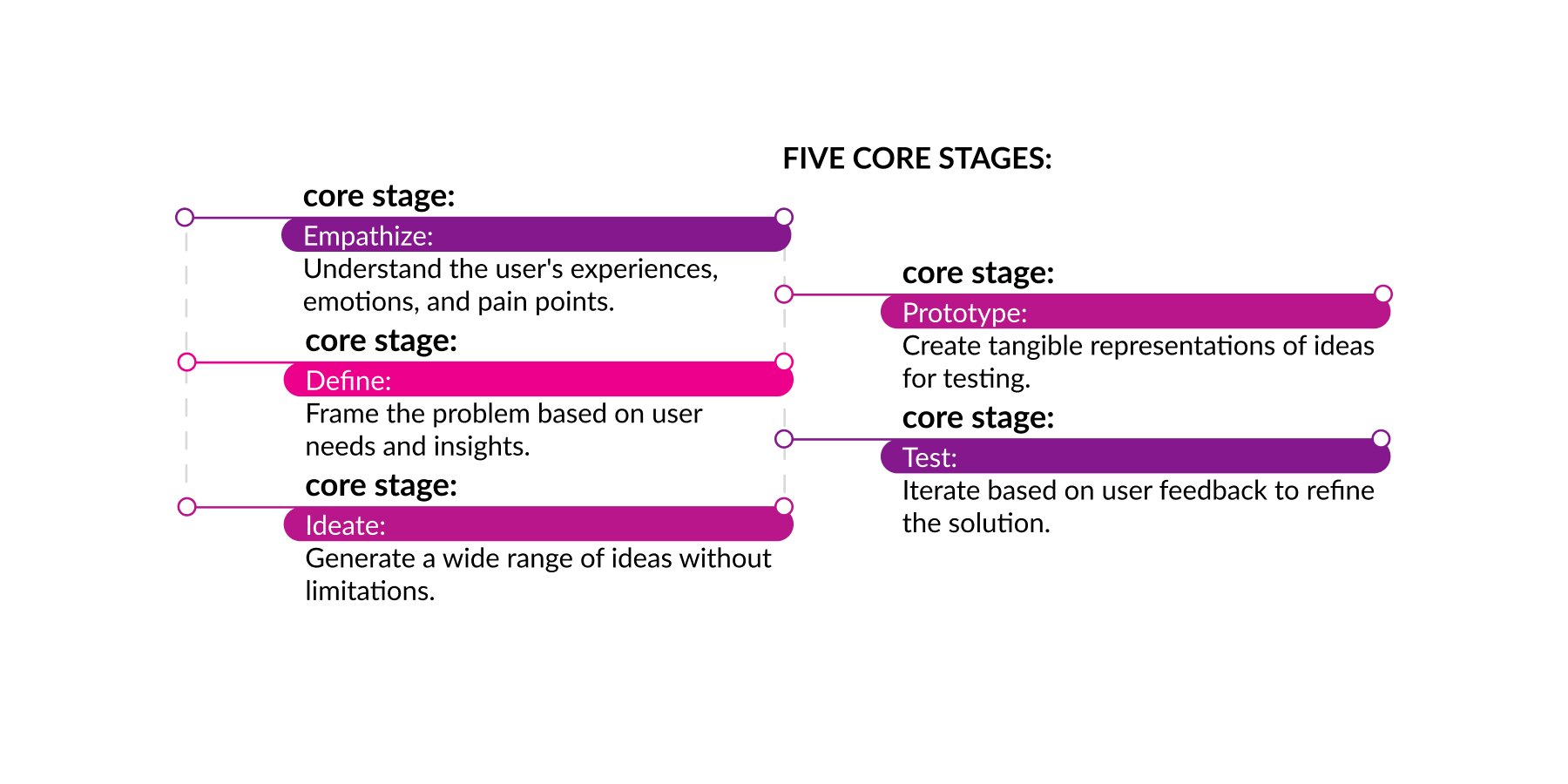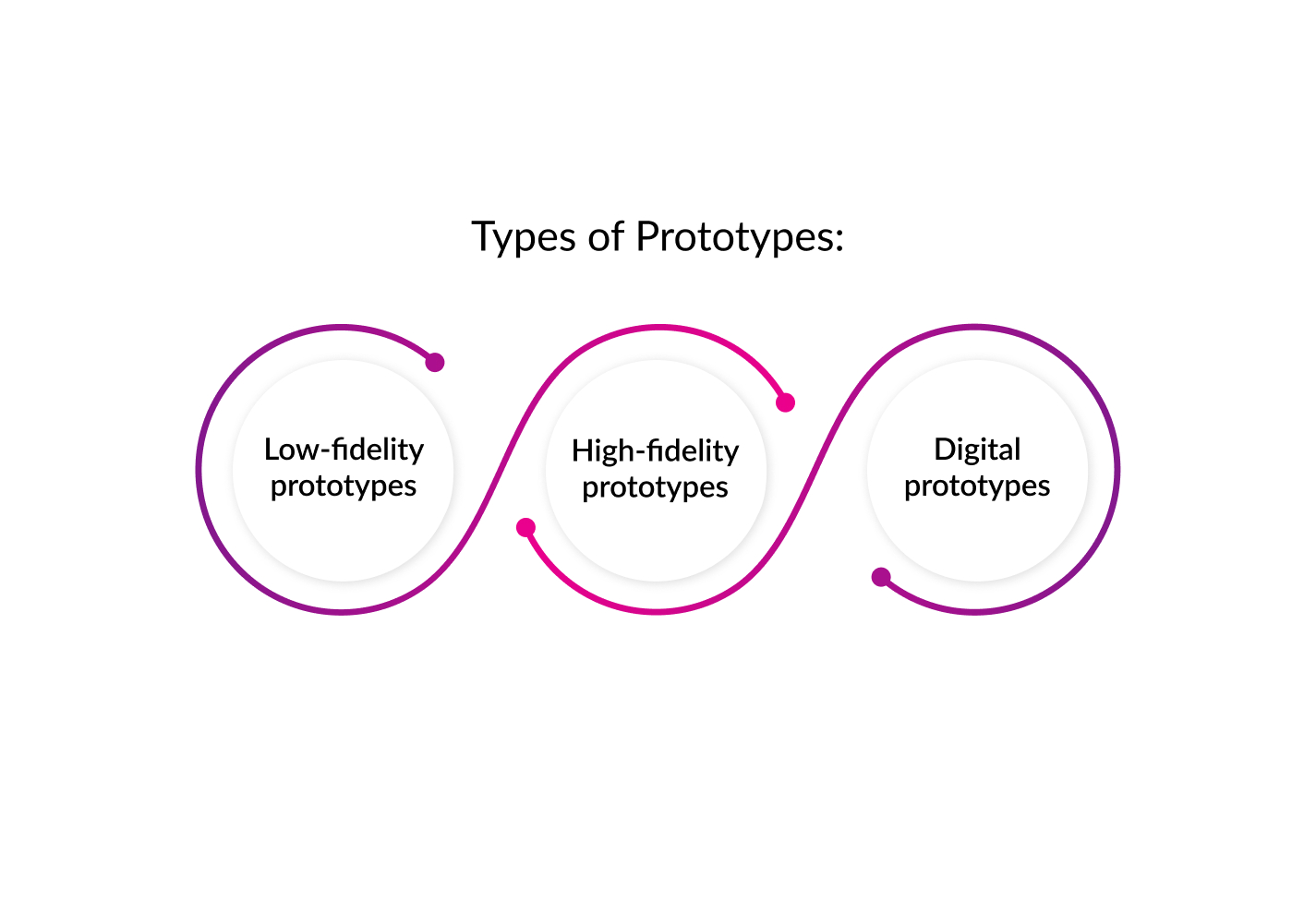IDEO’s Human-Centered Design
Successful product design requires a deep understanding of the end user’s needs in today's rapidly evolving market. Human-centered design (HCD) offers a framework that keeps users at the heart of the creative process, ensuring that solutions are functional and resonate emotionally with the audience. IDEO, a leader in human-centered design, developed an effective design thinking process that focuses on empathy, creative problem-solving, prototyping, and iterative design. At Quintagroup, we integrate this human-centered design process into every project we undertake, helping businesses build innovative, user-centric solutions.
Mastering the IDEO Human-Centered Design Process
IDEO’s human-centered design process emphasizes a wave-like flow of divergence and convergence across three essential phases: Inspiration, Ideation, and Implementation. The process ensures that various possibilities are explored, tested rigorously, and implemented using the most effective solutions.
This design process ensures that your products and services are perfectly aligned with the needs of their end users. The cycle of divergence and convergence allows us to explore multiple solutions before refining them into a focused, effective product.

Key Phases of IDEO's Design Process:

1. Inspiration: This phase starts with identifying a problem, understanding the people affected by it, and determining their needs. This part of the process is centered on empathizing with users and gaining insights into their challenges.
- Key Steps:
Problem Identification
User Research (People)
Defining Needs
2. Ideation: After gathering user insights, the team generates multiple ideas and potential solutions. Prototypes are developed to explore how well these ideas can address the defined needs, followed by the test-and-learn phase.
- Key Steps:
Brainstorming Ideas
Prototyping and Testing Solutions
3. Implementation: Once a solution shows promise, it moves into the implementation phase, where solutions are measured, refined, and scaled. Throughout the process, feedback loops allow for continuous learning and iteration.
- Key Steps:
Launching Solutions
Measuring Impact
Iterating and Refining Based on Feedback
IDEO's design thinking process is a structured approach that focuses on empathy and iteration. It involves five core stages, all of which correspond to the cycles of divergence and convergence seen in the diagram above:

Empathy in Design
Empathy is a critical aspect of human-centered design. It enables designers to build solutions tailored to real user needs and experiences. IDEO’s process begins with immersing the team in the users' world through user interviews, observations, and empathy mapping.
Techniques for Building Empathy:
- User interviews to gather personal experiences.
- Observing users in real-life contexts to understand behaviors.
- Empathy mapping to visualize user emotions and pain points.
Building empathy helps create user-centric solutions that are not only functional but resonate emotionally with users.
Prototyping and Iterative Design
Prototyping plays a vital role in the human-centered design process.
Types of Prototypes:
- Low-fidelity prototypes: Sketches or simple models used for early-stage testing.
- High-fidelity prototypes: Detailed, interactive models that closely resemble the final product.
- Digital prototypes: Software models that enable users to interact with features.

The process of iterating on designs through cycles of testing, feedback, and refinement ensures that solutions evolve to meet user needs as they emerge.
Creative Problem-Solving with Quintagroup
IDEO’s design thinking process thrives on creative problem-solving, and at Quintagroup, we fully embrace this mindset. Through collaboration, brainstorming, and innovation, we generate fresh solutions to complex challenges. Our team’s diversity of skills and perspectives ensures that every project benefits from a wide range of creative ideas.
Quintagroup’s Techniques for Creative Problem-Solving:
- Brainstorming Sessions: Encouraging free thinking and the sharing of unconventional ideas without judgment.
- Cross-Disciplinary Teams: Bringing together experts from various fields to tackle problems from different angles.
- Mind Mapping: Visualizing problems and solutions to uncover new connections and insights.

Сreative problem-solving is not just about finding quick fixes—it’s about developing long-term solutions that truly make a difference for users.
Wrapping up
The IDEO human-centered design process provides a powerful framework for creating innovative, user-focused products. At Quintagroup, we go beyond this process by combining empathy, iterative design, and creative problem-solving to craft solutions that deliver exceptional user experiences.
Whether you’re looking to improve an existing product or launch something entirely new, we can help you navigate the design journey with confidence.
Contact us today to learn how we can leverage human-centered design to transform your projects.

